Today one of the most hotly anticipated tech products, and perhaps the worst-kept secret, has finally been unveiled. Say hello to the newest iteration in the DJI Mavic series: the DJI Mavic 4 Pro.
This initial preview will be a first photography-focused look at the DJI Mavic 4 Pro and my initial thoughts on it. I already have one in my possession now and, in the coming months, I will thoroughly test it in all kinds of conditions. So definitely stay tuned for my 6-month review if you want to know how I get on this summer! For now, let’s dive into my initial thoughts. Grab a cup of coffee or tea, sit back and enjoy because this is a long one!
Update (26/08/2025): My photography-focused review of the Mavic 4 Pro is out now. In it, I share my thoughts after having used the Mavic 4 Pro intensely for 3 months.
Disclaimer: I did not get my hands on a preview model of the DJI Mavic 4 Pro. This is an opinion article based on all the available information of the DJI Mavic 4 Pro at the time of writing. This article is not sponsored in any way. However, when you make a purchase using the link in this article, I may earn a small commission.
To celebrate the launch of the DJI Mavic 4 Pro, you can now get 30% off the Drone Photography Masterclass. Scroll down below to enjoy the offer!
The DJI Mavic 4 Pro is one of the hotly anticipated new drones in recent years which will excite many serious drone photographers & videographers.
Image sourced from DJI.
In recent years, drone photography has become a cornerstone of what I do as a nature photographer. Since I began my journey in 2016, I have owned many different DJI drones. My first drone was the DJI Mavic, the first foldable drone DJI produced. While the drone itself was fun to fly, I wasn’t super impressed with the image quality of the camera itself. This opinion changed dramatically when its wildly popular successor, the DJI Mavic 2 Pro, was released. Even to this day, the DJI Mavic 2 Pro was the drone I used the longest. I really, really loved it and I produced a lot of my favorite photos with it. After damaging it at the 2021 Geldingadalir eruption, I transitioned to the DJI Air 2s before upgrading to the DJI Mavic 3 Pro, which I have now used for two years. After flying it for hundreds of hours, it’s safe to say that the Mavic 3 Pro is an absolute powerhouse. Because of that, it made me wonder how in the world DJI would ever improve upon it with the DJI Mavic 4 Pro but sure enough, they seem to have done it.
There is so much to talk about as the DJI Mavic 4 Pro is bringing many new features to the table. Therefore, I want to focus on some of the most important highlights & improvements this new DJI drone brings to the table. I picked these because I feel they are the most important to me as an aerial & drone photographer and will offer real world quality of life improvements.
1. DJI Mavic 4 Pro’s Brand New Camera Module
The thing that has me most excited are the new sensors and their quality. The camera module of the DJI Mavic 4 Pro still has a 3-camera setup but it does look like DJI has gone out of their way to considerably level up the image quality in the DJI Mavic 4 Pro. Without actually having been able to go out and shoot, the initial testing & files I have seen does seem to indicate that the improvements over its predecessor are significant. Every single sensor on this camera module has been redesigned and improved.
The main camera (1x) has a newly-designed Micro Four Thirds sensor with a slightly higher resolution (25 megapixels up from 20). The first RAW files I have seen look very crisp and detailed, with a superb dynamic range. This is a clear improvement over its predecessor. Perhaps a more important change is that this camera is now less wide with a 28mm full frame equivalent compared to the 24mm focal length found on the DJI Mavic 3 Pro. For me, as someone who exclusively shoots vertical and horizontal HDR panoramas using his drone, this is a great development as it means less distortion at the edges. Ever since I used the DJI Air 2s, I longed back to that tighter wide-angle I loved on the DJI Mavic 2 Pro. The 1x camera also has a lightly wider aperture available to it which may result in better low light performance when needed.
The 3x and 7x telephoto lenses of the DJI Mavic 3 Pro have now changed into 2.5x and 6x lenses. The focal lengths on the DJI Mavic 4 Pro are the same but because the 1x is now narrower, the factor of magnification is now smaller. DJI says both sensors are newly designed and have been improved upon their predecessors. This is certainly true when you compare the video specifications.
Each sensor on the DJI Mavic 4 Pro is now a quad-bayer sensor which means that using a clever trick, you can get 4 times the resolution out of them. However, I find this irrelevant as that high resolution quad-bayer image does not give you any better quality than upscaling the image during post-processing. Using the quad-bayer feature also results in less dynamic range, which I find is super important for drone photography. If you really need extremely high resolution images, you should be doing HDR panoramas anyway. That said, the improvements for photography will have to become apparent once I start using the DJI Mavic 4 Pro more intensely. However, bigger and newer sensors will certainly bring improvements with them whether it is crisper images, improved dynamic range of sharpness overall.
Finally, a small but very welcome software addition is that it is now possible to take 7-shot automated exposure brackets (AEB). You will therefore get images with a -2.1EV, -1.4EV, -0.7EV, 0EV, +0.7EV, +1.4EV & +2.1EV exposure. This means you get an even wider dynamic range when producing bracketed images and HDR panoramas.
If you are interested in comparing RAW files between the DJI Mavic 3 Pro & DJI Mavic 4 Pro, you can check those out in a separate blog where I make RAW files available from both drones in all kinds of conditions for comparison sake.
While the image quality of the DJI Mavic 3 Pro was certainly not bad, the initial results I have seen from the DJI Mavic 4 Pro are in another category entirely with excellent dynamic range and very good sharpness. I look forward to putting it through its paces this summer!
2. The Future Rotates: Mavic 4 Pro’s Infinity Gimbal
The DJI Mavic 4 Pro has another big change to the camera module, apart from the new sensors. DJI Mavic 4 Pro‘s new Infinity gimbal is now capable of more movement in all directions and is even able to rotate vertically, which is a feature that has not been seen on this line of drones since the Mavic 2 Zoom. Such functionality has also been restricted to the DJI Mini 3 and DJI Mini 4 series. This means that each of the 3 cameras on the camera module can now shoot vertically without any crop. However, it does seem like the angle of tilt in vertical mode seems to be rather limited. Whether that will matter in real world situations is something I will try out in the coming months. The Infinity gimbal can also roll horizontally on demand, and it can tilt both upwards (70 degrees) & downwards (more than 90 degrees) beyond the usual limits. DJI Mavic 4 Pro‘s new abilities open up a whole new world of possibilities for drone photography and more specifically, HDR drone panoramas which I almost always take.
These new capabilities are all thanks to the brand new “tennis ball” design of the gimbal module. One of the problems I sometimes faced with the DJI Mavic 3 Pro was that the horizon wasn’t always straight in windy and challenging conditions, which I suspected was because the gimbal was too large for the motors. This new gimbal-design on the DJI Mavic 4 Pro is likely much better designed to withstand heavier winds and I look forward to seeing how it holds up in the most brutal of conditions in the Icelandic Highlands this summer.
However, because this is the first time DJI truly redesigned the gimbal on these drones, it will be interesting to see how they hold up over time. Because of this, it’s definitely one of the main things I want to test before I give a final verdict on the DJI Mavic 4 Pro.
The teaser image published by DJI before the launch of the DJI Mavic 4 Pro showed the Infinity gimbal, which is arguably the most noticeable change compared to its predecessors.
3. Finally We Get OcuSync 4+ Transmission Technology (& A New Remote)!
The transmission technology in the DJI Mavic 4 Pro is finally getting a big upgrade. I am saying “finally” because the Mavic 3 Classic and Pro were the last serious drones in the line-up that still sported the older OcuSync 3 technology. This finally brings some of the big improvements seen on the DJI Mini 4 Pro and DJI Air 3/Air 3S drones.
Thanks to DJI Mavic 4 Pro‘s new Ocusync 4+ transmission technology we are getting a much improved transmission range, which is now rated up to 30 kilometers (FCC) and 15 kilometers (EU). The transmission bit rate is also higher and has a higher frame rate than before. DJI also claims that if you are flying together with other drone pilots, there will be far less disturbance compared to with previous models. This is certainly a welcome change for someone like me who often flies with other people in groups during photography workshops. With the DJI Mavic 4 Pro, you can also expect to get access to improved controllers. The DJI Mavic 4 Pro is available with the DJI RC-N3 (the basic controller which needs a smartphone), the DJI RC 2 (now with external antennas) and the brand-new DJI RC Pro 2.
A New Remote: DJI RC Pro 2
With the DJI Mavic 4 Pro comes a brand-new pro controller. The DJI RC Pro 2 is the first significant update to the DJI RC remote controller, which I have been using for the last two years.
The most noticeable change is that it now has a flip out 7 inch mini-LED screen, which is much brighter than the original DJI RC. Because of the new design, the screen is now considerably larger and it folds upwards into a better position to get the best viewing angle without straining your neck. This clever new design has a few other tricks up its sleeve. One of my biggest pet peeves with the DJI RC Pro (and any remote controller for that matter) is the absolute pain the detachable joysticks are. I take really good care of my gear but somehow still managed to lose joysticks at least four times. This problem is now gone because the screen folds down on top of the joysticks, allowing you to leave them permanently attached to the controller. The screen also physically rotates vertically, which makes it easier for you to see how you are producing vertical content. By rotating the screen on the remote controller, the camera module also rotates vertically. The external antennas on the DJI RC Pro 2 now also have only one position when extended. This means that you can’t put them in an unfavorable position anymore without knowing because they simply fold downwards and snap into place.
There are a few other smaller tidbits such as the ability to connect a DJI Mic to the remote controller, allowing you to do voiceovers, but also that the whole experience is faster and snappier thanks to upgraded processing capabilities. One thing I am very curious about is how the battery life will stack up against other controllers. The DJI RC Pro was great but lacked the better battery life of the cheaper DJI RC. Hopefully that has changed. However, the charging speed of the DJI RC Pro 2 is now also much faster so perhaps this isn’t that big of a deal anymore. One final note is that the new design has made the DJI RC Pro 2 considerably thicker compared to its predecessor.
The DJI RC Pro 2 is also compatible with all the OcuSync 4 drones that are already available such as the DJI Air 3s, DJI Air 3 and DJI Mini 4 Pro.
DJI Mavic 4 Pro’s Numerous Quality of Life Improvements
As I mentioned before, there is so much more to talk about here. The DJI Mavic 4 Pro also has a number of “smaller” improvements that are certainly worth mentioning:
- The estimated flight time of the DJI Mavic 4 Pro is now rated at 51 minutes, which is improved over the DJI Mavic 3 Pro/Classic models. I always take these ratings with a grain of salt because they are measured in absolutely perfect conditions which I almost never encounter. However, I will gladly take any improvement over its predecessor which already had stellar battery life.
- The obstacle avoidance now works in only 0.1 lux of light thanks to forward-facing LiDAR technology. The obstacle avoidance technology now also works up to speeds of 18m/s (up from 15m/s).
- The charger that comes with the DJI Mavic 4 Pro is now capable of parallel charging! This is such a big quality of life improvement. Up to now, every single DJI drone charger only support sequential charging which made charging multiple batteries an absolute pain unless you had separate charging bricks. I can’t believe it took DJI this long to implement this functionality but I am super glad they did. One downside I see is that the battery holder for the charger is considerably larger than its predecessor.
- DJI Mavic 4 Pro now comes in 3 “flavours”: a basic version with the DJI RC 2 remote controller, that same version with as a Fly More Combo with extra batteries and a “Creator” edition which comes with the new DJI RC2 Pro remote controller and 512GB of built-in storage. The “Creator” version replaces the Ciné version which is no longer an option.
- ProRes video, which was available on the DJI Mavic 3 Pro Ciné, is no longer available and is being replaced by an All-I codec which has similar quality as ProRes video. I suspect the reason they dropped ProRes is due to the licensing costs involved.
- DJI Mavic 4 Pro is capable of flying at 25m/s in Sport mode and 18m/s in Normal mode, which is slightly faster than its predecessor.
- The DJI Mavic 4 Pro has the same advanced Smart Return-To-Home technology built-in which allows your drone to return to its home point without needing GPS. The home point is now also dynamically updated, which comes in handy when you’re on a moving boat or in a vehicle.
- The drone switches on immediately after unfolding the arms and takes less time to be ready to use. You can still use the power button on the battery if you wish to do so.
- The DJI Mavic 4 Pro drone weighs 1063 grams which makes this the heaviest Mavic ever made. In the EU, this drone is classed as a C2 drone as it is above 900 grams.
- Focused on video-shooters, DJI is thought to be planning an attachable electronic ND filter. The filter itself connects in the same way as on previous models but also has an electronic connector once in place. While it is not available on release, it promises to solve one of the most annoying aspects of ND filters on drones which is that you can’t change them in the air. Because of this limitation, I never use ND filters so I will likely give these a try once they are available for some video projects.
- There is an extra scroll-wheel style button on the DJI RC Pro 2, which allows you to control exposure compensation.
The DJI Air 3s first introduced the Smart Return-To-Home functionality, which is now also coming to the DJI Mavic 4 Pro.
Conclusion: Should You Get A DJI Mavic 4 Pro?
There is no denying that the DJI Mavic 4 Pro looks to be a solid successor to the DJI Mavic 3 Pro with many upgrades. However, should you therefore also get one? With every iteration, the differences between the different drone ranges become bigger and bigger. More than before, there is now a very clear difference between the model line-ups for beginners & casual drone photographers (Mini Pro series), more serious amateur drone photographers (Air series) and professional drone photographers (Mavic series).
I think the first question you should be asking yourself is where do you sit in that range? Are you a beginner, intermediate or professional user? Can you somehow warrant the undeniably expensive cost-picture that comes with the DJI Mavic 4 Pro? And if you can warrant it, are you pushing against the limits of the DJI Mavic 3 Pro that it constricts your work? If so, then you should definitely upgrade. Of course, if you simply want the best and you don’t care about the cost picture involved, this is also the drone for you. It’s undeniably a great, top-of-the-line drone for photography.
Stay Tuned!
As I have mentioned in the intro, these were just my initial impressions. I am planning to do an extensive review after 6 months of usage. This summer, I am running a lot of drone-focused photography workshops, and I will be doing a few personal projects as well. That means I will have plenty of opportunities to fully test the DJI Mavic 4 Pro out in the field in all sorts of conditions. Stay tuned!
Compare The RAW Files Of Mavic 3 Pro With Mavic 4 Pro
I have now also published a new blog containing my findings when comparing the RAW files of Mavic 4 Pro & Mavic 3 Pro. You can download the files yourself and check them out!
DJI Mavic 4 Pro: The Important Specifications
Technical Specifications
- Battery life: rated up to 51 minutes
- EU Drone Class: C2
- Weight: 1063 gram
- Transmission technology: OcuSync 4+
- Maximum video transmission range: 30 km (FCC) – 15 km (CE/SRRC/MIC)
- Obstacle avoidance: Omni-directional obstacle avoidance with front-facing LiDAR (works in 0.1 lux darkness)
- Maximum altitude at takeoff: 6000 meter
- Maximum wind resistance speed: 12 m/s
- Maximum horizontal speed (at sea level): 25 m/s (Sport mode) & 18 m/s (Normal mode)
The Main Wide-Angle Camera (1x)
- A new Micro Four Thirds CMOS sensor that has 25 megapixels (100 megapixels with quad-bayer technology)
- A 28mm-equivalent on full frame (less wide than on the DJI Mavic 3 Pro)
- A variable aperture of F2.0 up to F11
- Video capabilities up to 6K resolution at 60fps in HDR – with great dynamic range
- Slow-motion video capabilities up to 4K at 120fps
- The same color profiles as in the past: D-LOG, D-LOG M & HLG
The Mid-Range Telephoto Camera (2.5x)
- A new 1/1.3″ CMOS sensor with a 12 megapixels resolution (48 megapixels with quad-bayer technology)
- A 70mm-equivalent on full frame (roughly the same as the DJI Mavic 3 Pro)
- A fixed aperture of F2.8
- Video capabilities up to 4K at 60fps in HDR – with great dynamic range
- Slow-motion video capabilities up to 4K at 120fps
- The same color profiles as in the past: D-LOG, D-LOG M & HLG
The Long-Range Telephoto Camera (6x)
- A new 1/1.5″ CMOS sensor with a 12.5 megapixels resolution (50 megapixels with quad-bayer technology)
- A 168mm-equivalent on full frame (roughly the same as the DJI Mavic 3 Pro)
- A fixed aperture of F2.8
- Video capabilities up to 4K at 60fps in HDR – with great dynamic range
- Slow-motion video capabilities up to 4K at 100fps
- The same color profiles as in the past: D-LOG, D-LOG M & HLG
A full list of all the specifications can be found on DJI’s website.
Affordable Alternatives
If you are looking at alternatives to the DJI Mavic 4 Pro, I can point you into the direction of my updated drone buyer’s guide. If you are considering upgrading from an older model, you may also be able to get some great deals on second-hand Mavic 3 series drones or others.
GET 30% DISCOUNT NOW!
The Drone Photography Masterclass
Nigel Danson & Jeroen Van Nieuwenhove‘s complete drone masterclass will explore everything you need to know to start creating the best aerial photographs using any type of drone in 50+ detailed videos. Whether you are a complete beginner or an advanced drone pilot, this video course contains a vast amount of information to level up your drone photography skills.
Learn Drone Photography
Want to learn how to get the best results with your newly purchased drone? I wrote the most comprehensive guide available on drone photography which teaches you a technique to get the DSLR-like results out of even the cheapest drones.
In 125 detailed pages I explore everything you need to know to start creating the best photographs using any type of drone. Whether you are a complete beginner or an advanced drone pilot, this e-book contains a vast amount of information to level up your drone photography skills.
What to Expect?
- A 125-page educational PDF about nature drone photography with very detailed explanations
- Which drone to get for photography and why
- Important settings and configuration options
- A list of useful skills & tips
- A list of useful accessories and what not to buy at all
- How to research locations for drone photography
- How to compose with a drone and insight into Jeroen’s thought process with plenty of examples
- Thoughtfully planning ahead for your drone shoot
- The how and why of creating bracketed images
- The how and why of shooting HDR panoramas
- What challenges you might face and how to deal with them
- Common mistakes & how to deal with them
- How to stitch your panoramas together
Use EBOOK20 to get 20% off your Nature Drone Photography (E-Book) purchase!
Support Jeroen’s Work
As an independent photographer, Jeroen partially relies on your support to keep producing worthwhile content such as blogs, photographs, books and much more. If you want to support his work, it is possible to do so by buying his e-books & books, prints or calendars.
You can also sign up to the newsletter to stay up to date on new blog posts, projects, workshops and other interesting information.
Thank you for considering!

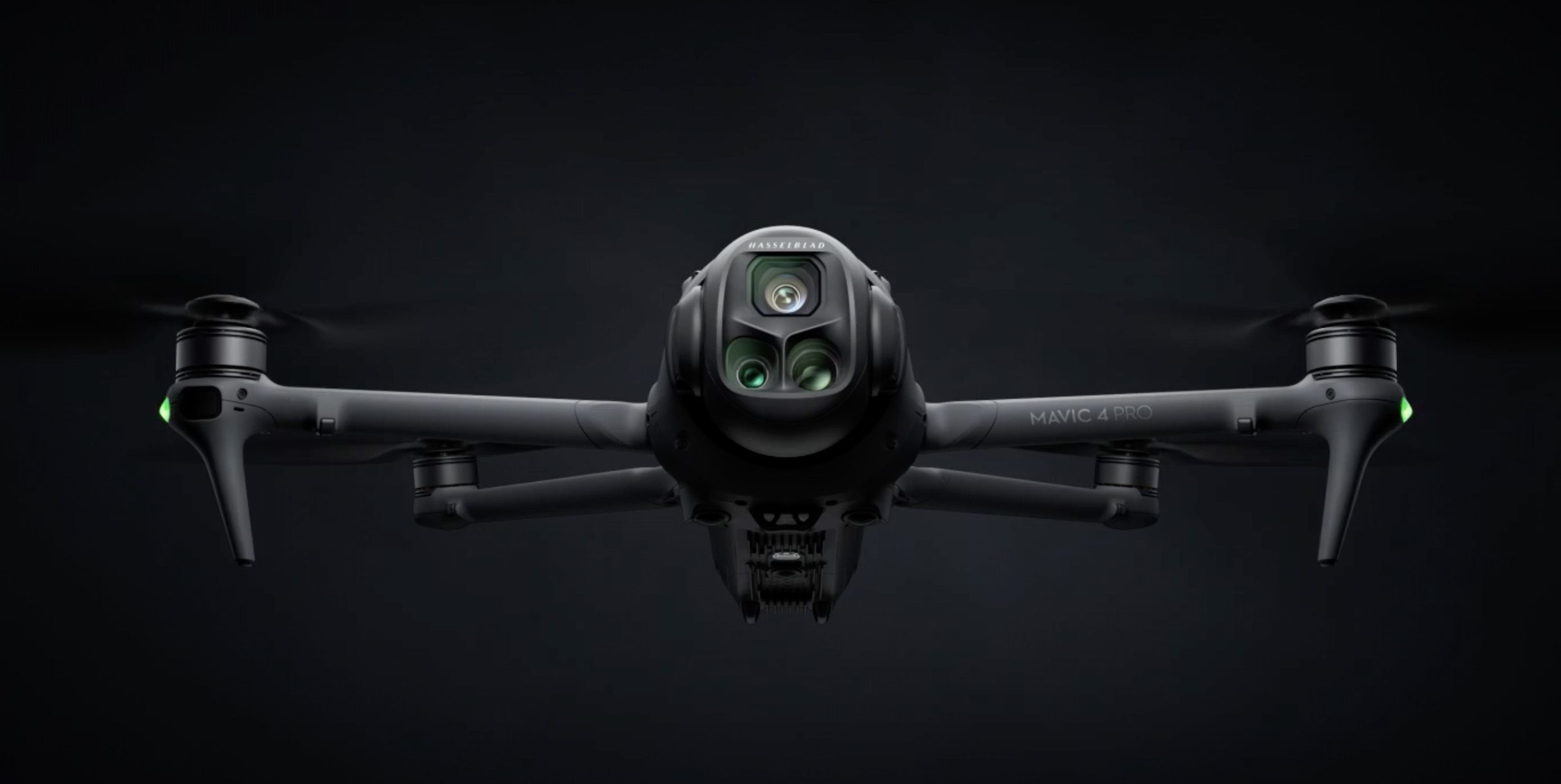











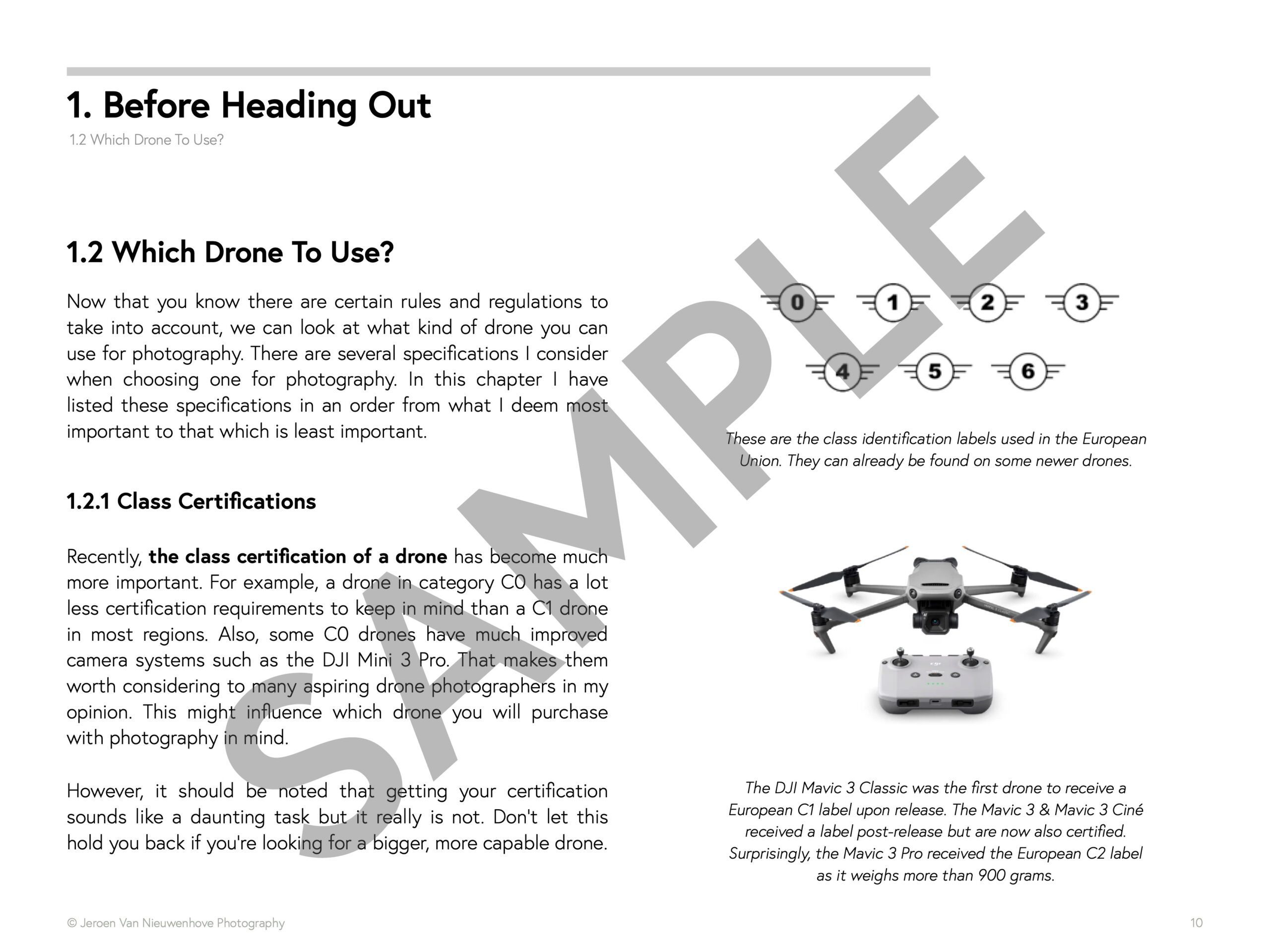
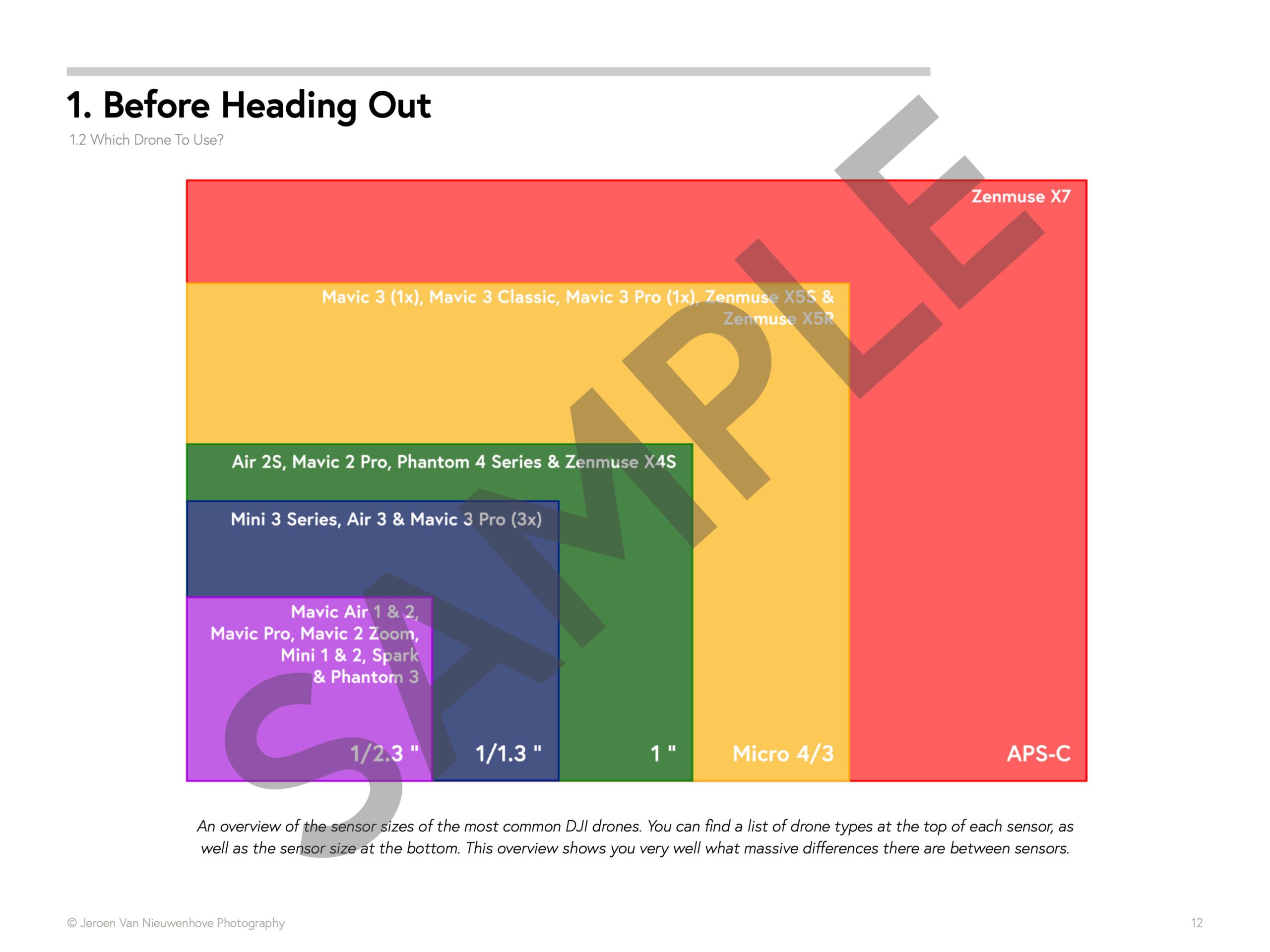
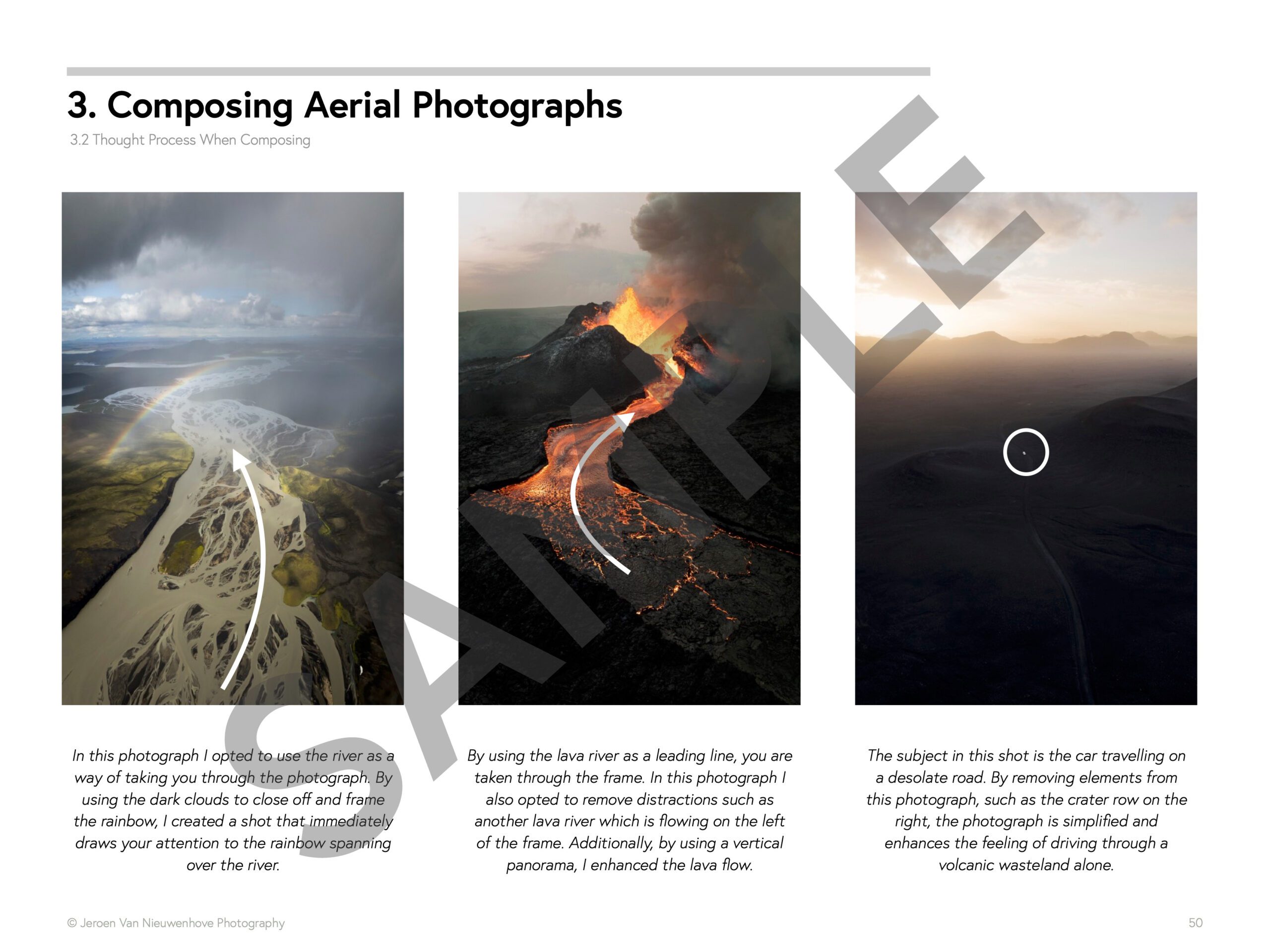
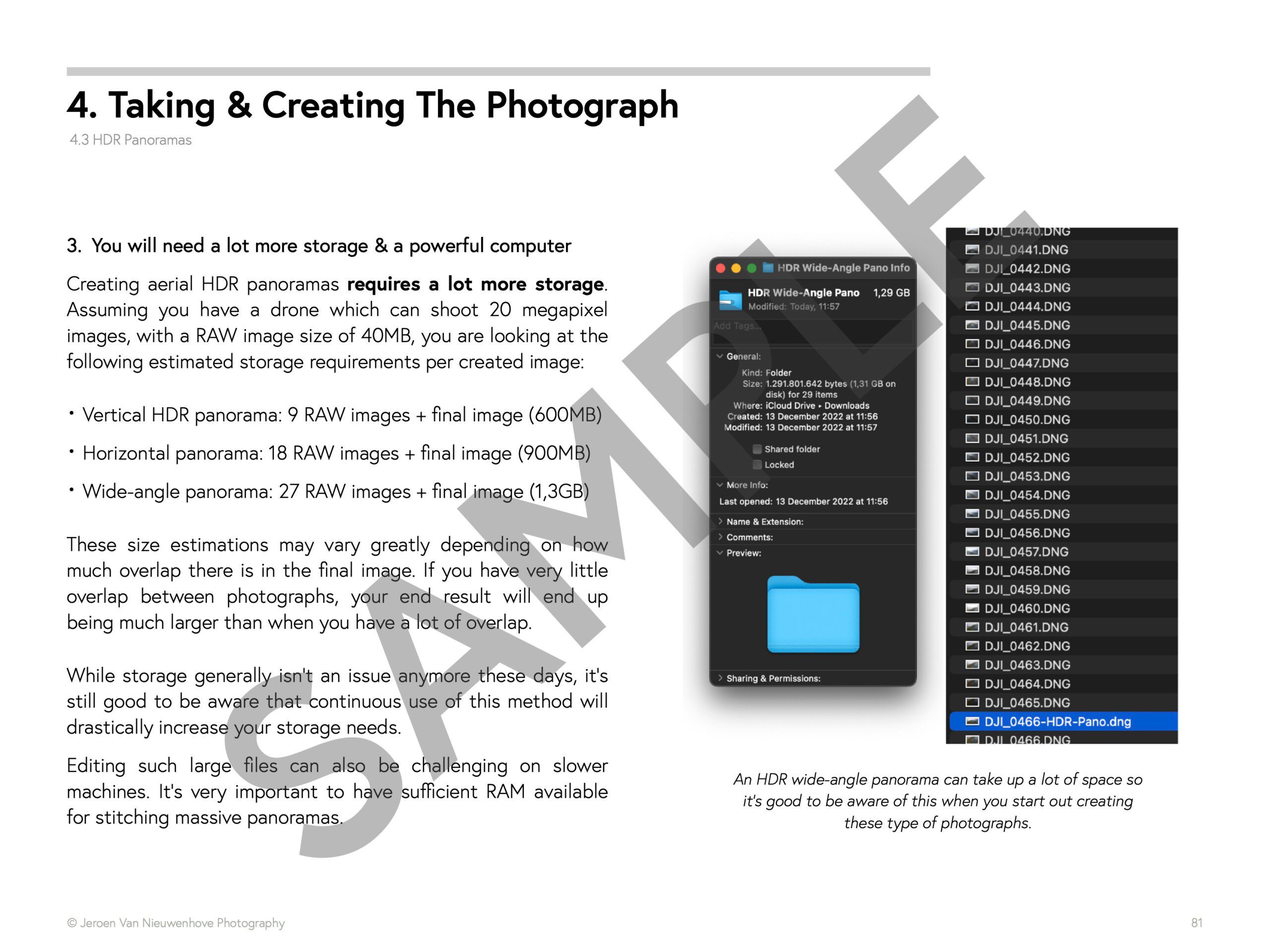
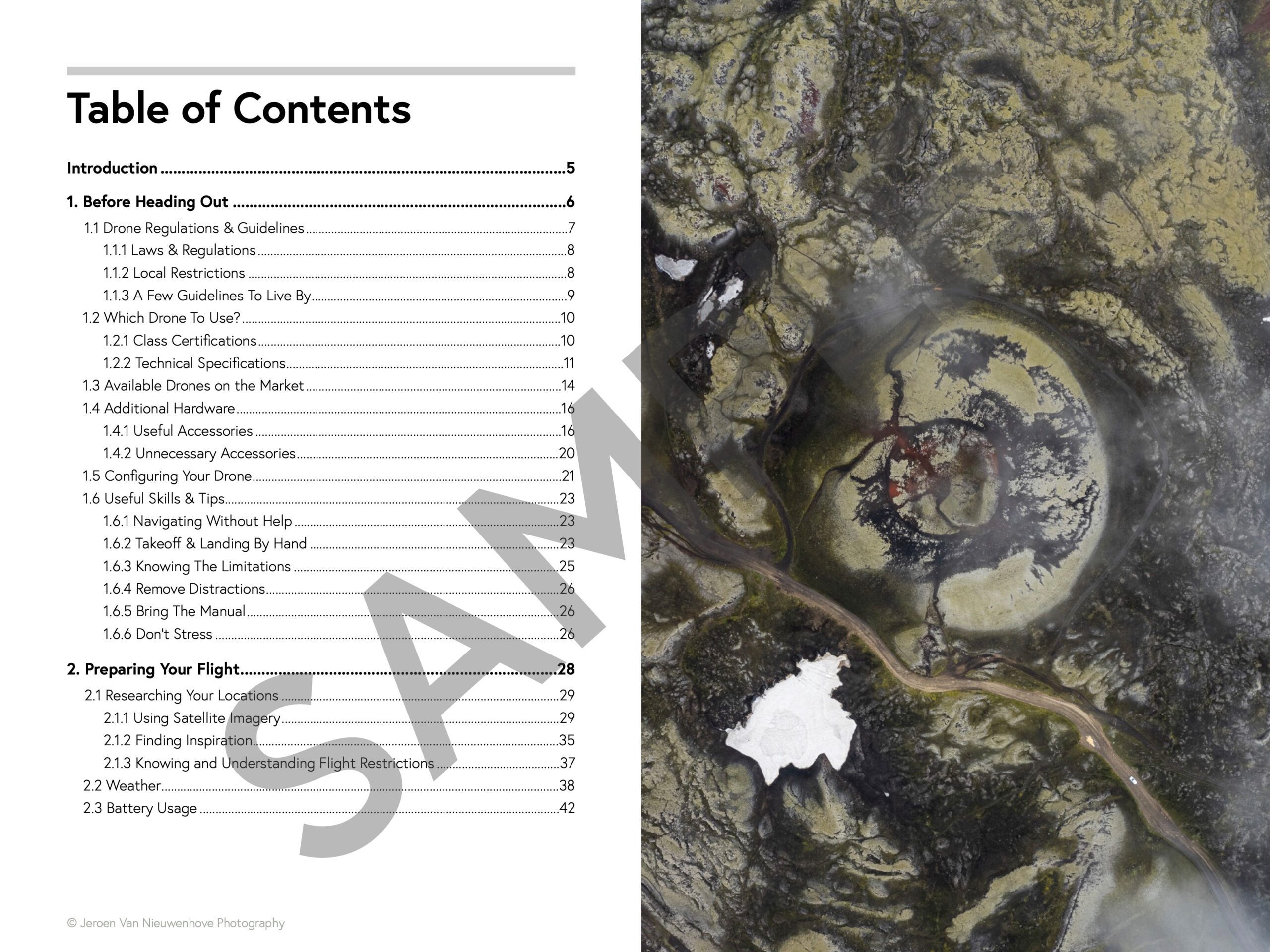
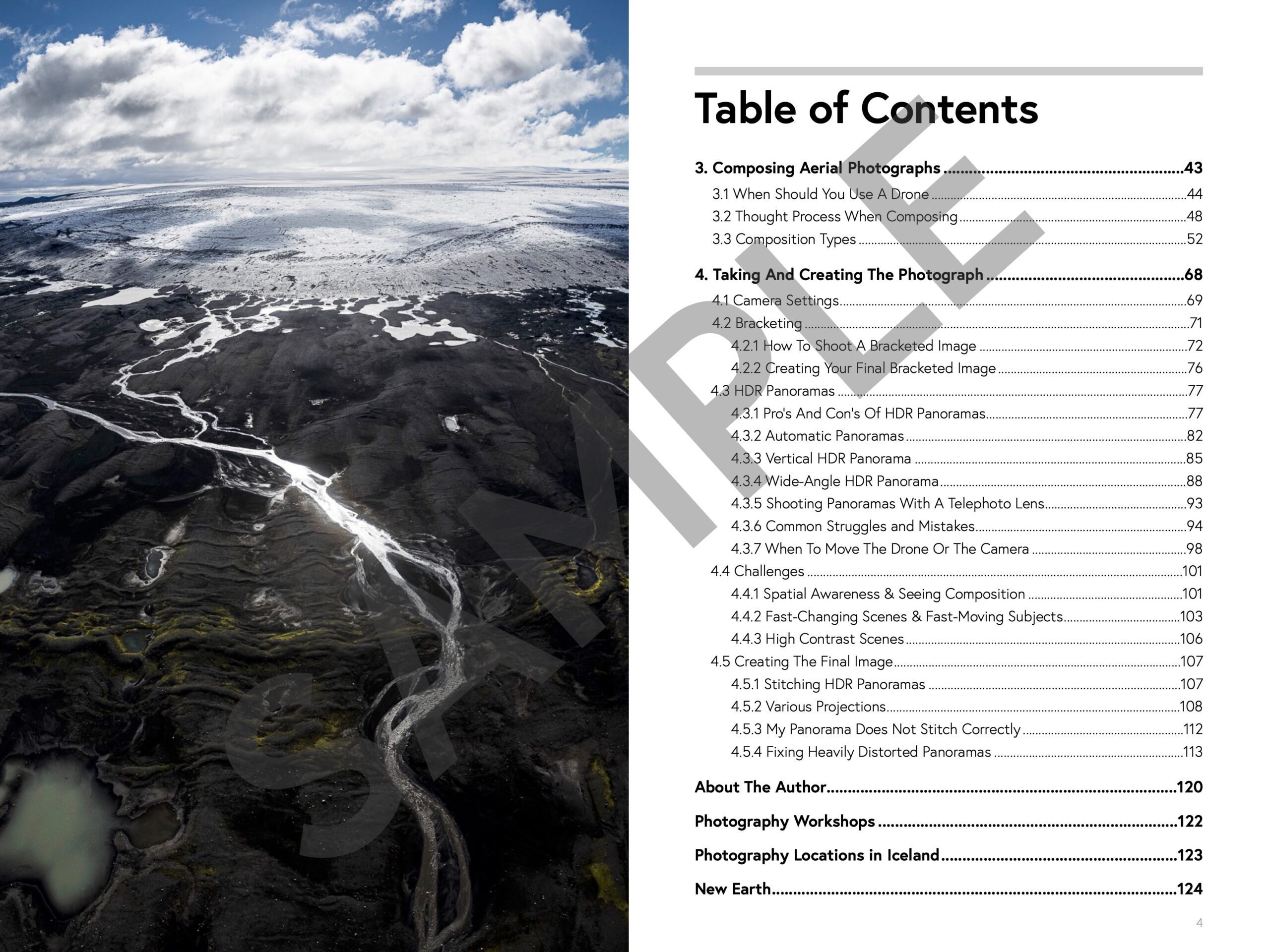



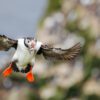


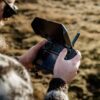
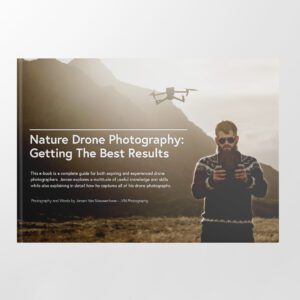





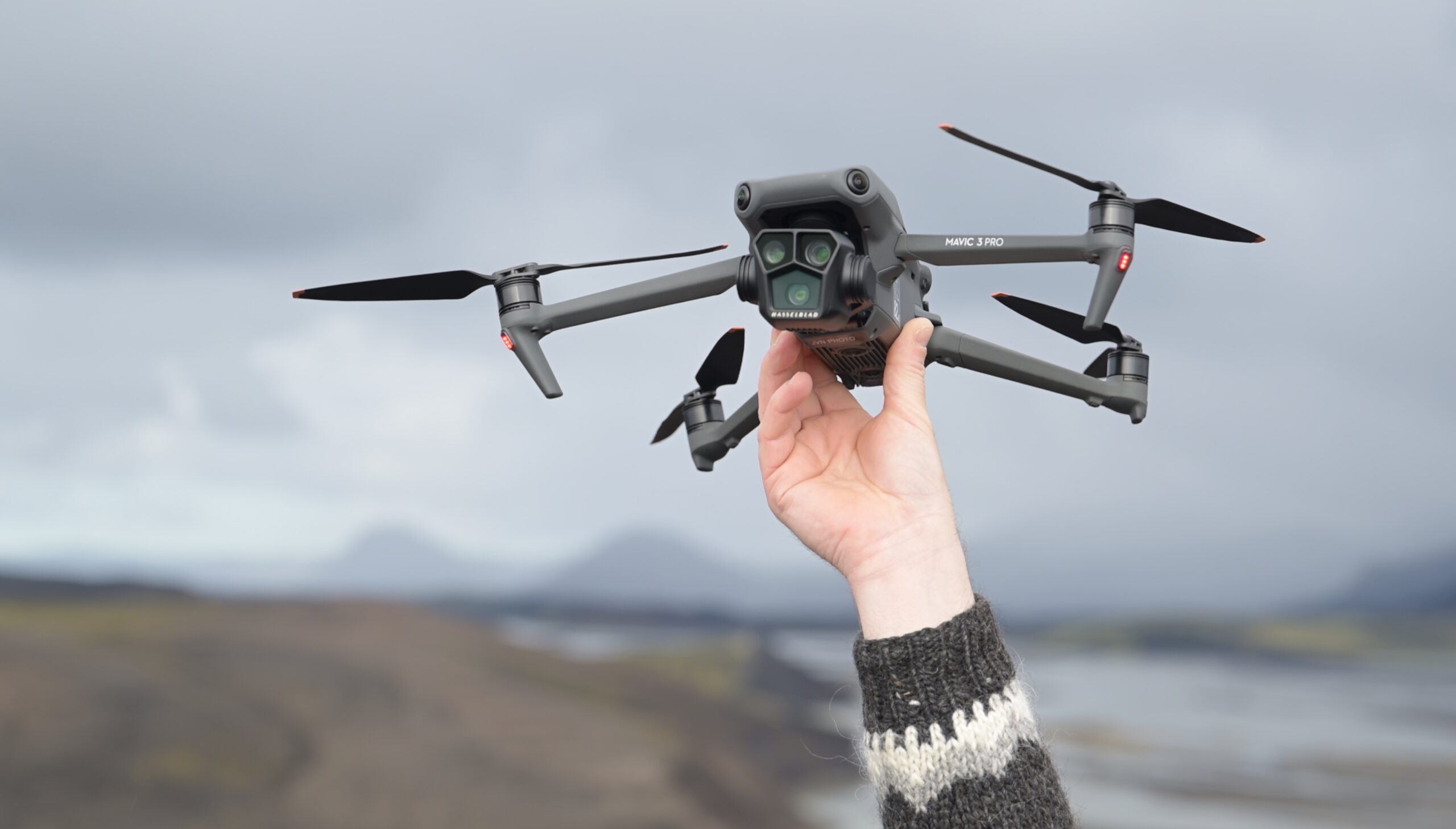
Where did you find the information regarding the Mavic 4 when only the the basic RC that still uses your own phone/tablet? I can’t see that version for sale or find any info on it?
There was a website where it originally was shown as such but can’t find any trace of where I found that so I removed it from my article now. It may have been a mistake.
Great article. How long does it take to stitch a 180° panorama using the capture panorama mode? The Mavic 3 takes 30 seconds. I’m assuming Mavic 4 might be faster as it has a faster processor?
Thank you. I do not use the automated panorama feature. If you’re curious why, I detail it in a special blog. That said, I think you need to take into account a few things. One there’s the processing power of the unit, which will be faster on the Mavic 4 Pro. Second, and perhaps more important, is that when you save your shots to the internal SSD (which my unit has), it will go blazingly fast. So if you are using the automated pano feature, which I don’t recommend you do, you should always try to store the files to the fastest available storage. If you are storing them to the SSD, I doubt you will see much speed improvement.
This was a great, unbiased, initial overview of the updates to a drone I’m seriously looking at purchasing. Anyone needing the capabilities of a drone like this will benefit highly from your vast experience and knowledge of drone photography. Can’t wait to read your reviews after using it (hope we don’t have to wait six months!)
Thank you for your kind words Mark. I gave myself 6 months but what I actually meant was that I will do it after I get to fly it all over the place during this summer. So probably releases earlier!